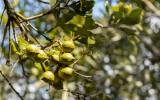5 Types of Macadamia Trees: Are All Their Nuts Edible?
As a passionate foodie or a potential grower, you might be intrigued by the idea of sourcing or cultivating macadamia nuts yourself. However, not all types of macadamia are edible. In this article, we'll take a closer look at different macadamia species and discover which ones will grace your table with their edible bounty.
The five main types of macadamia trees are Macadamia integrifolia, Macadamia tetraphylla, Macadamia jansenii, Macadamia hildebrandii, and Macadamia whelanii. Among these, only the nuts of M. integrifolia and M. tetraphylla are edible. M. hildebrandii can also be eaten, but they are currently critically endangered.
Remember, while you might be tempted to try nuts from any macadamia tree, it's best to stick with the known edible varieties. Below, we'll take a closer look at the unique characteristics of each macadamia type.
Understanding macadamia species diversity allows the selection of resilient, high-value species that can help in optimizing and establishing a new macadamia farm.
Summary
- Macadamia integrifolia and Macadamia tetraphylla are edible and widely consumed due to their nutritional value, rich flavor, and versatility in culinary applications.
- Macadamia ternifolia and Macadamia whelanii are not commonly cultivated for nut production because they have long maturity periods, hard shell textures, high oil content, and the presence of natural toxins.
- Macadamia hildebrandii, despite being endangered, is also consumed for its edible nuts, which are considered a delicacy and used in culinary applications.
- The Beaumont macadamia variety is highly prized for its large nuts, rich flavor, high yield, and adaptability to various growing conditions, making it an economically attractive choice for growers and a sought-after option for consumers.
- The A4 variety stands out for its exceptional disease resistance, producing high-quality kernels, and exhibiting favorable growing characteristics, making it an attractive option for growers concerned about crop loss and seeking a variety that can thrive in diverse climates and soil types.
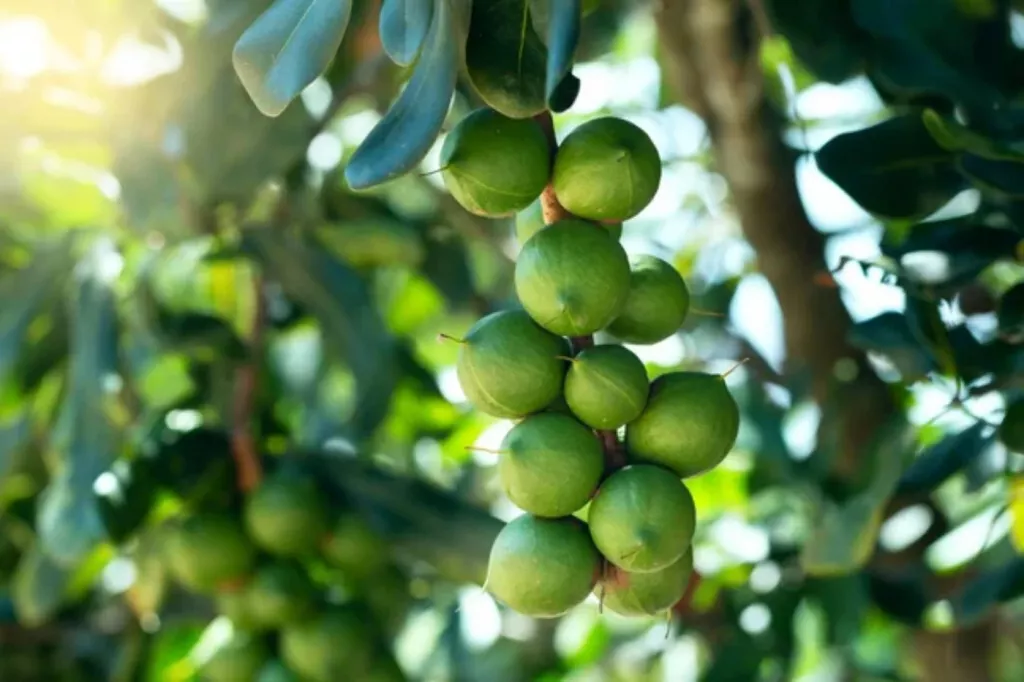
Different Types of Macadamia Nut Trees
The table below provides an overview of different macadamia species, highlighting their edibility and key characteristics:
| Macadamia Species | Edible? | Note |
|---|---|---|
| Macadamia integrifolia | Yes | Widely eaten and commercially available. |
| Macadamia tetraphylla | Yes | Also commercially cultivated for edible nuts. |
| Macadamia ternifolia | No | Lesser-known species, not for nut production. |
| Macadamia whelanii | No | Rare and not recognized for nut consumption. |
| Macadamia hildebrandii | Yes | Currently under critically endangered status |
Macadamia integrifolia produces edible nuts
Macadamia integrifolia is known for its smooth-shelled nuts. This species is native to Australia and thrives in climates that provide plenty of rainfall and aren't exposed to frost. If you're looking for a tree that produces a high-quality, sweet nut, this might be the one for you.
- Origin: Australia
- Shell texture: Smooth
- Climate preference: Rainfall-rich, frost-free
The following provides reasons why these types of Macadamia are widely consumed:
They are packed with nutritional value
Macadamia nuts are packed with essential nutrients such as healthy fats, protein, vitamins, and minerals. They are a good source of monounsaturated fats, which are beneficial for heart health. Additionally, they contain antioxidants and fiber, making them a nutritious choice for a balanced diet.
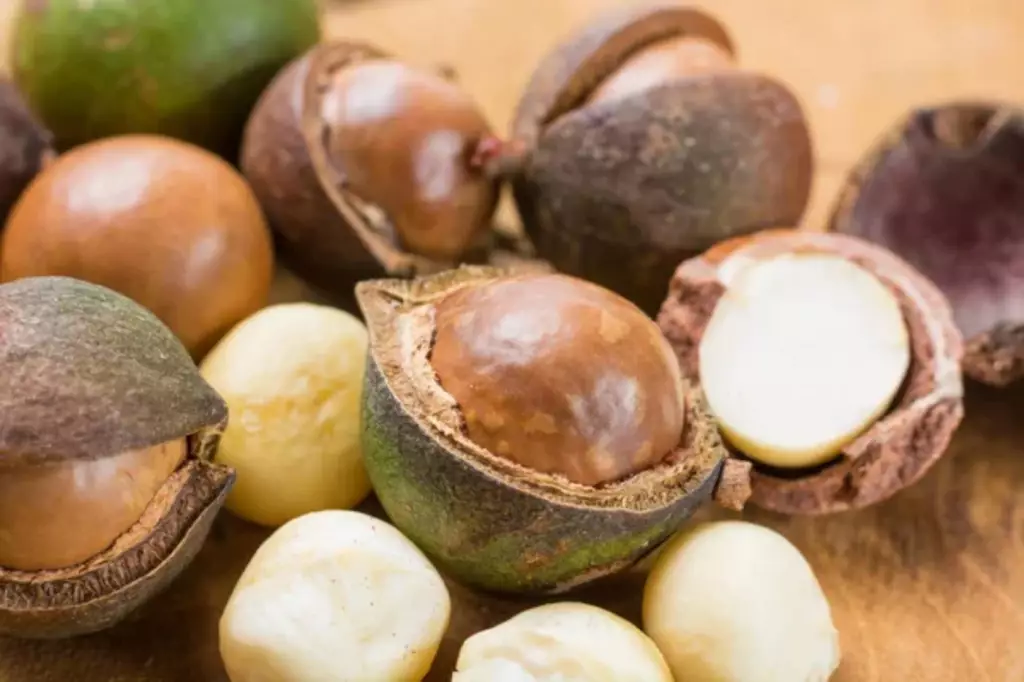
They are flavorful
The nuts from Macadamia integrifolia have a distinctive, rich flavor that is often described as buttery and slightly sweet. This makes them a popular choice for both savory and sweet dishes. Their pleasant taste adds depth and richness to a wide range of culinary creations.
They are versatile
Macadamia nuts can be enjoyed in various forms, including raw, roasted, and salted, and as an ingredient in recipes such as cookies, cakes, salads, and savory dishes. Their versatility in the kitchen makes them a valuable addition to many cuisines around the world.
They have a smooth shell that is easier to open
Unlike some other nuts that have hard, difficult-to-crack shells, Macadamia integrifolia's nuts have a smooth shell texture, making them easier to open and access the edible kernel inside. This characteristic adds to their appeal and convenience for consumption.
The nuts of Macadamia tetraphylla can also be consumed
Macadamia tetraphylla is another Macadamia species known for its rough shell and tolerance to cooler conditions, and is one of the most common nut tree types being cultivated.
- Origin: Queensland and New South Wales in Australia
- Shell texture: Rough
- Climate tolerance: Frost-hardy
The nuts of these species are prized for their rich, buttery flavor and creamy texture, making them a popular choice for both snacking and culinary uses.
They are often enjoyed in their raw form, but they can also be roasted and salted to enhance their flavor. Additionally, they are frequently used in baking, confectionery, and as a topping for various dishes.
Macadamia nuts are a good source of healthy fats, vitamins, and minerals, making them a nutritious and delicious addition to a balanced diet.
In addition to their culinary uses, they are known to be rich in monounsaturated fats, which have been associated with heart health. Furthermore, they contain antioxidants such as vitamin E, which may help protect cells from damage caused by free radicals.
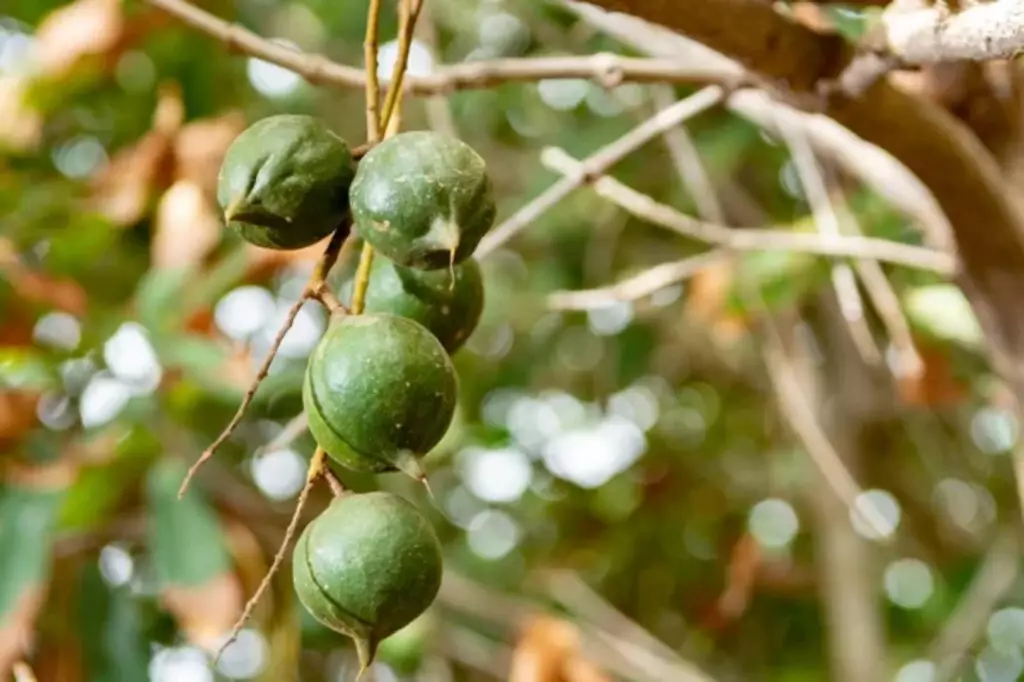
You might recognize the Beaumont, a cultivar of M. tetraphylla, which is renowned for its suitability for home gardens due to its frost hardiness and quick growth rate. It's also a prolific bearer of nuts.
Macadamia ternifolia is not commonly cultivated and is not edible
Macadamia ternifolia is not typically cultivated for nut production because the tree takes a relatively long time to mature and start producing nuts, often taking up to 7-10 years before the first harvest. This extended period makes it less commercially viable compared to other nut-bearing trees.
Additionally, their nuts have a very hard shell, which makes it difficult to crack open and extract the edible kernel. This labor-intensive process adds to the cost and effort of harvesting the nuts, further reducing their appeal for large-scale production.
Furthermore, the nuts of Macadamia ternifolia contain high levels of oil, which can turn rancid quickly if not stored properly. This makes them more challenging to handle and store compared to other nuts.
In terms of edibility, while Macadamia ternifolia nuts are not toxic, they are not typically consumed in their raw state due to potential digestive issues and the presence of certain compounds that can cause mild toxicity.
However, after proper processing, including roasting, the nuts can become edible and are enjoyed for their rich, buttery flavor.
Macadamia whelanii is another inedible macadamia species
Macadamia whelanii, also known as the rough-shelled macadamia, is not considered edible. Their nuts contain high levels of a natural toxin called cyanogenic glycosides, which can be harmful if consumed in large quantities. These compounds can release cyanide when metabolized by the body, posing a potential health risk.
Additionally, Macadamia whelanii is rare and not recognized for nut consumption because it is not widely cultivated or commercially grown. Unlike other species of macadamia, such as Macadamia integrifolia and Macadamia tetraphylla, which are extensively cultivated for their edible nuts, Macadamia whelanii is not commonly cultivated for food production. Its rarity and limited distribution further contribute to its lack of recognition for nut consumption.
Furthermore, the rough shell of Macadamia whelanii also presents a challenge for accessing the nuts, making it less practical for commercial cultivation and consumption compared to other macadamia species with smoother shells.
Macadamia hildebrandii is another edible species
Macadamia hildebrandii is a species of flowering tree in the Proteaceae family that is native to the Hawaiian Islands. It is considered endangered due to several factors, including habitat loss, invasive species, and overharvesting.
One of the main reasons for the endangerment of Macadamia hildebrandii is habitat loss. The expansion of urban areas, agriculture, and infrastructure development has led to the destruction and fragmentation of its natural habitat.
Non-native plants and animals, such as feral pigs and invasive plant species, compete with Hildebrand's macadamia for resources and disrupt its natural ecosystem. This can lead to a decrease in the species' ability to survive and reproduce, further contributing to its endangered status.
Furthermore, the overharvesting of this variety has had a detrimental impact on its population. The species is known for its edible nuts, which are often collected for consumption.
However, unsustainable harvesting practices, coupled with the species' slow growth and low reproductive rate, have resulted in a decline in its numbers.
Despite being endangered, Macadamia hildebrandii can be eaten. Its nuts are considered a delicacy and are used in various culinary applications, such as baking, confectionery, and as a standalone snack.
However, you may need to ensure that the harvesting of the nuts is done sustainably and in a manner that does not further endanger the species.
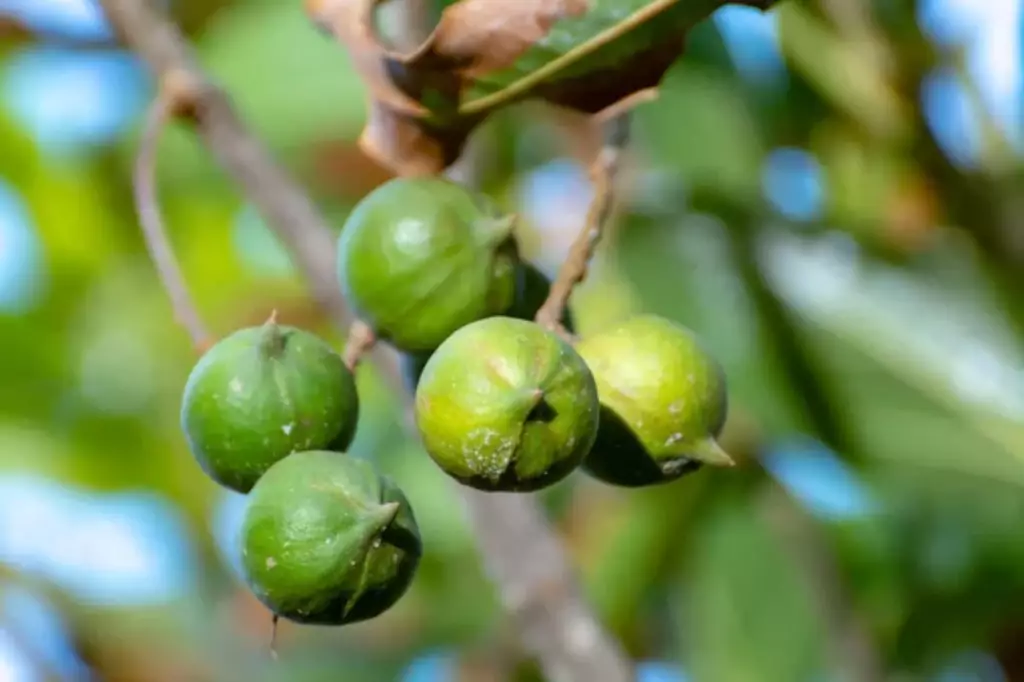
Efforts are being made to conserve and protect Macadamia hildebrandii, including habitat restoration, control of invasive species, and the establishment of protected areas.
Conservation organizations and government agencies are working to raise awareness about the species' plight and implement measures to safeguard its future.
The Best Macadamia Varieties
The table below shows some of the top macadamia varieties, each celebrated for its distinct features and qualities:
| Variety | Best Features |
|---|---|
| Beaumont | Large nuts, high yield, rich flavor |
| A4 | Disease-resistant, high-quality kernels |
| Keaau | Early maturing, high productivity, good flavor |
The Beaumont variety is known for producing large nuts
The Beaumont macadamia variety is considered one of the best due to several key characteristics that make it highly desirable for growers and consumers alike.
First and foremost, it is renowned for producing large nuts with a rich and distinctive flavor. The size and flavor of the nuts contribute to their appeal in the market, as they are often sought after for both culinary and snacking purposes.
In addition to its exceptional nut quality, the Beaumont variety is known for its high yield. This means that growers can expect a significant harvest from Beaumont trees, making it an economically attractive choice.
Furthermore, the trees are known for their vigor and adaptability to a variety of growing conditions. This adaptability can make them easier to cultivate in different regions, providing flexibility for growers in selecting suitable growing environments.
The A4 variety is valued for its disease-resistant properties
One of the standout features of the A4 variety is its exceptional disease resistance. This resistance to common macadamia tree diseases can significantly reduce the risk of crop loss and the need for extensive pest management, making it an attractive option for growers concerned about the health and longevity of their orchards.
In addition to its disease-resistant properties, A4 is known for producing high-quality kernels. The kernels from A4 macadamia nuts are prized for their superior quality, which is a critical factor for growers aiming to produce top-grade macadamia nuts for the market.
Furthermore, the tree exhibits favorable growing characteristics, including good tree vigor and adaptability to various environmental conditions.
This adaptability can make A4 macadamia trees suitable for cultivation in different regions, offering flexibility to growers seeking a variety that can thrive in diverse climates and soil types.
Keaau macadamia trees are prized for their early maturing nature
Keaau macadamia trees reach maturity and begin producing nuts at a relatively young age compared to other varieties. The early maturation of Keaau trees can significantly reduce the time to the first harvest, providing a quicker turnaround for growers and an earlier start to the production cycle.
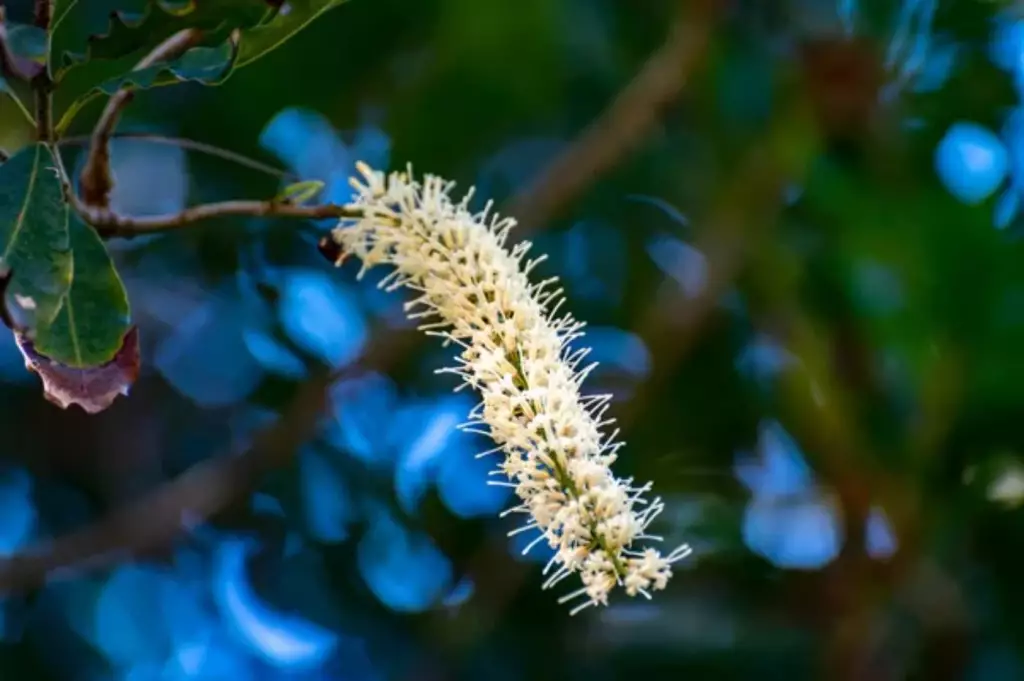
In addition to early maturation, Keaau macadamia trees are known for their high productivity. The trees have a reputation for bearing a substantial yield of nuts, making them an economically attractive choice for commercial growers.
Furthermore, Keaau nuts are recognized for their good flavor, adding to the overall appeal of this variety. The combination of early maturation, high productivity, and desirable nut flavor makes Keaau macadamia trees a sought-after option for both growers and consumers.
Additionally, Keaau trees exhibit good adaptability to a range of environmental conditions, allowing them to thrive in diverse climates and soil types. This adaptability can provide flexibility to growers seeking a variety that can perform well in various regions, contributing to the widespread cultivation of Keaau macadamia trees.
If you'd like to know more interesting facts about Macadamia trees, you should check out this article.
